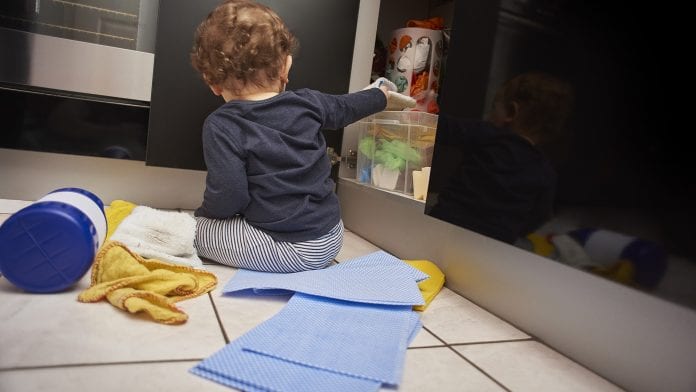
Presented at the American Association for the Advancement of Science, researchers found children to carry evidence of harmful substances from furniture and home flooring toxins.
Furniture and home flooring toxins being present in households has been a topic of debate and now according to a new study led by Duke University, USA, children may be the key to proving it.
Furniture and home flooring toxins
According to the study, children living in homes with all vinyl flooring or flame-retardant chemicals in the sofa have significantly higher concentrations of potentially harmful semi-volatile organic compounds (SVOCs) in their blood or urine compared to children from homes where these materials are not present.
The researchers presented their findings 17 February 2019 at the annual meeting of the American Association for the Advancement of Science in Washington, USA.
They discovered that children living in homes where the sofa in the main living area contained flame-retardant polybrominated diphenyl ethers (PBDEs) in its foam had a six-fold higher concentration of PBDEs in their blood serum.
Exposure to such toxins has been linked in laboratory tests to neurodevelopmental delays, obesity, endocrine and thyroid disruption, cancer and other diseases.
In regards to the home flooring toxins, the children from homes that had vinyl flooring in all areas were found to have concentrations of benzyl butyl phthalate metabolite in their urine that were 15 times higher than those in children living with no vinyl flooring.
Benzyl butyl phthalate has been linked to respiratory disorders, skin irritations, multiple myeolma and reproductive disorders.
Human exposure to furniture and home flooring toxins is widespread
Heather Stapleton, an environmental chemist at Duke’s Nicholas School of the Environment, who led the research, explains: “SVOCs are widely used in electronics, furniture and building materials and can be detected in nearly all indoor environments.”
“Human exposure to them is widespread, particularly for young children who spend most of their time indoors and have greater exposure to chemicals found in household dust.”
“Nonetheless, there has been little research on the relative contribution of specific products and materials to children’s overall exposure to SVOCs.”
Details of the study
Therefore, to address this research gap, in 2014 Stapleton and colleagues from Duke, the Centers for Disease Control & Prevention, and Boston University, USA, began a three-year study of in-home exposures to SVOCs among 203 children from 190 families.
“Our primary goal was to investigate links between specific products and children’s exposures, and to determine how the exposure happened – was it through breathing, skin contact or inadvertent dust inhalation,” Stapleton explained.
The team analysed samples of indoor air, indoor dust and foam collected from furniture in each of the children’s homes, along with a handwipe sample, urine and blood from each child.
Stapleton added: “We quantified 44 biomarkers of exposure to phthalates, organophosphate esters, brominated flame retardants, parabens, phenols, antibacterial agents and perfluoroalkyl and polyfluoroalkyl substances (PFAS).”









